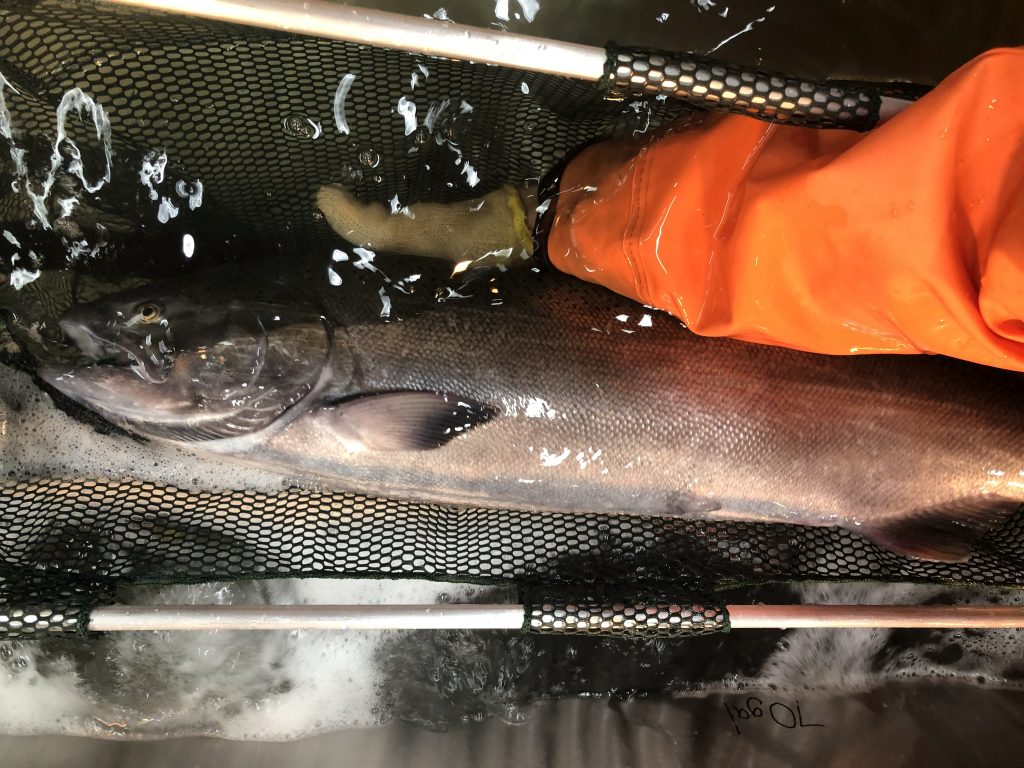Some Happy Thanksgiving News: Salmon Sightings!
Happy Thanksgiving from California Sportsman! Here’s a promising report from our friends at the U.S. Fish and Wildlife Service:
At least 700 sub-adult and adult winter-run Chinook salmon returned this year to Battle Creek northeast of Red Bluff.
Although monitoring efforts were curtailed, 47 redds were also observed, with juveniles now being captured in the U.S. Fish and Wildlife Service’s rotary screw trap as they emigrate out of the system. To date, more than 300 fry have been captured and monitoring efforts will continue through the fall.
Establishing another self-sustaining population in a second watershed (in addition to the Sacramento River’s population), such as Battle Creek, is a high priority and a major component of the Central Valley salmonid recovery plan.

These returns are higher than expected, as there was an anticipation to see 500 to 600 adult fish return this year. Although the restoration actions in Battle Creek are not complete, there was adequate habitat for some fish to spawn and produce juveniles. This year’s returning adults were released into Battle Creek as part of the Jumpstart Project in 2018 and 2019, when 214,000 and 184,000 juveniles were released.
“These results illustrate the significant foresight to start the captive broodstock program after California’s historic drought had devastating impacts to winter Chinook salmon eggs and fry, particularly in 2014 and 2015,” said Paul Souza, regional director for USFWS’s California Great Basin Region. “Continued collaboration between NOAA Fisheries, the state, Bureau of Reclamation and the [U.S. Fish and Wildlife] Service is paramount for successful recovery of this endangered species. Working together, we can accomplish a great deal for the future of this species.”

Bureau of Reclamation regional director Ernest Conant agreed. “Reclamation is pleased to collaborate with our federal, state and private industry partners on the restoration of this important watershed and the reintroduction of winter-run Chinook salmon,” said Conant. “The higher
than expected numbers of winter- run salmon returning to Battle Creek this year demonstrate the value of our investments in fish passage and habitat.”
Winter Chinook were extirpated from Battle Creek in the early 1900s with the development of a hydroelectric project in the watershed. Through the Battle Creek Salmon and Steelhead Restoration Project, these historic habitats will be accessible again.
“The evidence of reproduction in Battle Creek is a testament to the collaboration of federal and state agencies, landowners and others, and to the tenacity of these fish that just do not give up,” said Cathy Marcinkevage, assistant regional administrator for NOAA Fisheries’ West Coast Region. “It’s great progress in helping California’s native salmon come back.”
A Battle Creek Winter-run Reintroduction Plan was completed in 2016, calling for complete restoration
before the reintroduction of fish. In response to the 2012-2016 drought, the resources agencies decided in 2017 to jump-start the reintroduction of winter Chinook into their historic habitat of Battle Creek. Juvenile fish were released into the watershed in 2018, 2019 and 2020. These efforts have been coined the “Battle Creek Jumpstart Project.”
“The return of winter-run Chinook salmon to Battle Creek illustrates the resiliency of salmon in the Central Valley and the success that has been accomplished on Battle Creek through partnership and collaboration,” said Tina Bartlett, the California Department of Fish and Wildlife’s Region 1 manager. “The department is excited to be part of the reintroduction project and looks forward to future returns increasing in numbers as it moves forward.” CS
Editor’s note: For more on the USFWS Pacific Southwest Region, go to fws.gov/cno.



